
How to Build a Writing Portfolio with No Experience (+ 10 Great Examples)

Jessica Michael
Published onSo you're a writer, and you want to take your writing career to the next level. What kinds of tools do you need to start landing jobs and clients?
One of the first things you'll need is an online writing portfolio. In this article, we'll share how to build a writing portfolio that will impress clients and employers, even if you have no experience.
What is a writing portfolio?
At its most basic, a writing portfolio is a collection of your writing samples that you can share with potential clients and employers. Often, it will also include information about you, your work and educational background, and the types of writing services you provide.
Most writing portfolios are online writing portfolios hosted on websites. This makes it exceptionally easy to share and to update. It also makes it into a marketing tool, as you can connect your social media and add things like email sign-ups to your portfolio.
What should a writing portfolio look like?
A writing portfolio can be a website with a single scrollable page that includes bio, work samples, and contact information. Or, it can include multiple pages that display your work and other information separately. You can make your portfolio as complex as you like, as long as it's well-organized and easy to navigate.
It's important to remember that the purpose of an online writing portfolio is to showcase your writing skills, so you don't want to create a portfolio design that's so elaborate that it's hard to tell what it's about. That being said, writing portfolios that create visual interest through photos, graphics, logos, and color schemes are more impactful.
How to create a writing portfolio
As you choose your layout, design elements, and color scheme, you want to keep your brand identity in mind and create an aesthetic that matches. You'll also want to keep it consistent across your site. This is easier if you use a website builder with pre-designed templates and themes, so you don't have to think about it.
Website builders that feature templates for portfolios, or website builders such as Journo Portfolio that are specifically for portfolios, make it easy to upload your information and design a professional-looking and complete portfolio within a short period of time.
All you have to do is gather the material you want to upload to your portfolio!
What to put in a writing portfolio
1. About Me
An About Me section or page talks about your writing experience, educational background, and writing style. You can add a few personal details to make it more personable and we always recommend a professional bio photo.
2. Work Samples
This is the most important part of a writing portfolio, whether you're designing a creative writing portfolio, a content writing portfolio, or a digital marketing portfolio. You'll only want to include your best work here.
3. Contact Info
Clients and employers need a way to contact you if they want to work with you, so add a contact page or email address.
4. Services
Some writers like to include a detailed breakdown of the services they provide, with or without pricing included.
5. CV
A more detailed CV is great to link to your writing portfolio if you are looking for in-house work or you have relevant expertise stemming from your work experience.
6. Social Media Buttons
Including links to your social media accounts turns your writing portfolio into a marketing tool. Just make sure you only link to your business accounts.
7. Blog
A blog is another great way to use your portfolio for marketing, and it can add more writing samples for clients to check out.
8. Embedded video or audio clips
This feature is especially important if you write content for multimedia platforms such as scripts or ads. Make sure the website builder you choose allows for this option.
9. Testimonials
Nothing is more convincing than testimonials from previous clients, employers, or editors!
10. Case studies
Case studies take one project from inception to completion, showing each step along the way. This shows clients that you can take on more complex projects and gives you a chance to show how you work.
How to build a writing portfolio with no experience
Creating a writing portfolio with no experience can seem overwhelming, but you probably already have most of what you need, like an About Me and contact information. You may even already know what kinds of services you want to provide and have created social media accounts for your work.
The most common issue is not having enough work samples.
There are a few great ways to create work samples for your writing portfolio even if you've never been published.
Mock work samples- As long as you define that the work sample is a mock-up, these work great for building out writing samples for the type of work you want to do. If you're stymied, there's also multiple online programs that can help you build out mock samples.
Mock case studies- Similar to above, you can use a faux company to create a detailed case study that exemplifies the type of work you do.'
Including a blog- Including a blog on your site means you can self-publish articles through your portfolio that can act as samples.
Guest posting- You can also guest post on other people's blogs to add to your credentials.
Writing projects through school or training- You may already have some impressive writing samples from your schooling or through writing certification programs you've taken.
Remember, most people are going to be looking at the quality of your writing and not the number of publications you've been in or the number of companies you've worked with. Spend time developing quality work samples and you'll soon find yourself landing clients and getting published!
10 brilliant writing portfolio examples
1. Beth Fand Incollingo
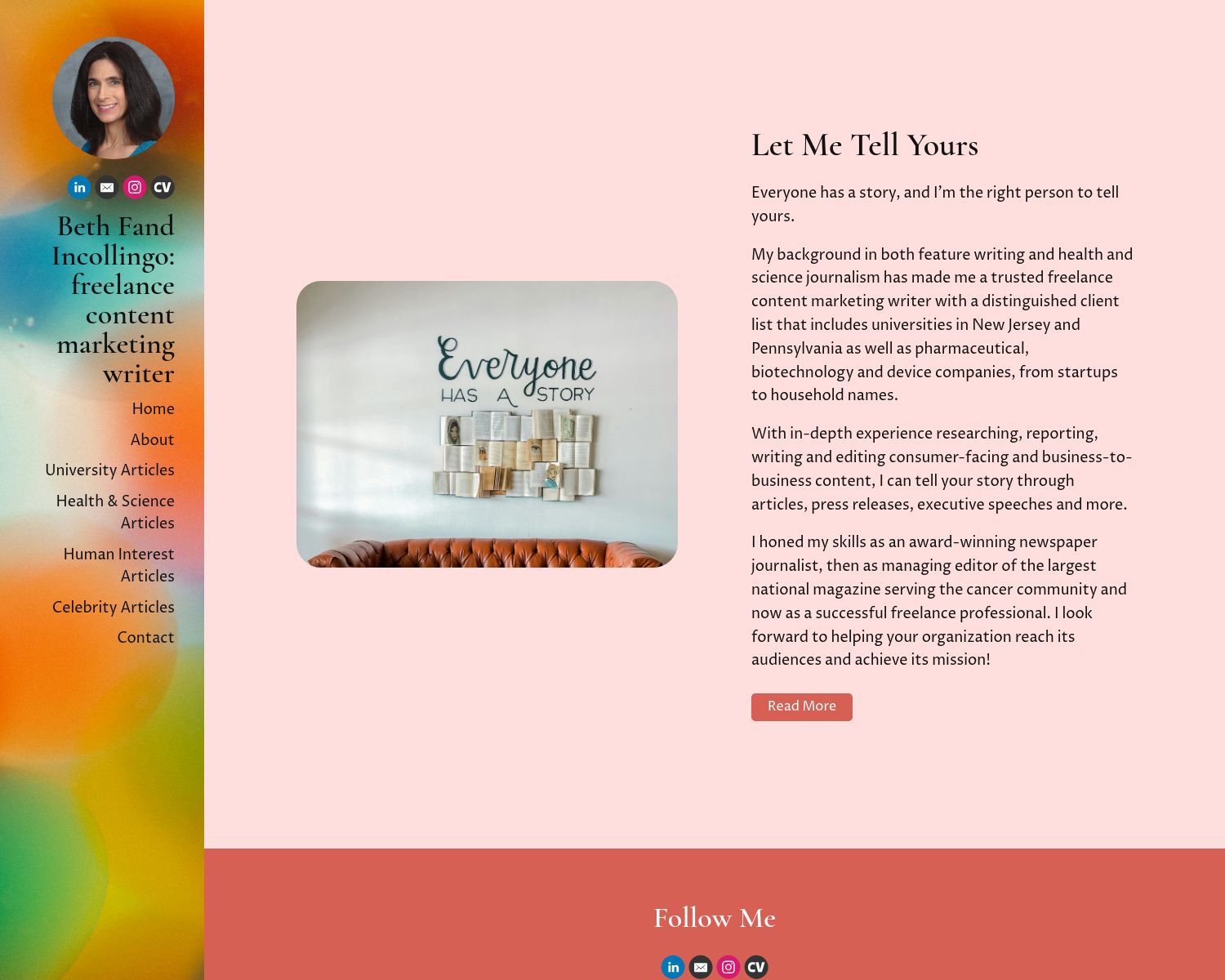
Beth is a freelance content marketing writer who specializes in Health and Sciences writing and messaging for universities and academic institutions.
Best Features: Beth has divided her work samples onto separate writing portfolio examples pages. Her health and sciences articles, university articles, and human interest articles all get their space to shine. This not only shows potential marketing clients that she has a depth of experience in multiple areas, but it also makes it easy for them to find writing samples specific to the type of work they want her to do.
Pro Tip: Create consistency across portfolio pages by using the same grid design. This keeps pages clean and connected.
2. Anthony Coppola

Anthony Coppola is a certified technical writer and screenwriter.
Best Features: In order to create technical writing samples for his online writing portfolio, Anthony invented a mock software company named SEIFER. He then wrote multiple examples of technical writing products such as a user guide and brand style guide to showcase how he would handle those types of technical writing projects from a client.
Pro Tip: Using one mock company to showcase a variety of writing skills while maintaining brand consistency is a great way for new or transitioning writers to create writing samples for their portfolio.
3. Triana Garrett
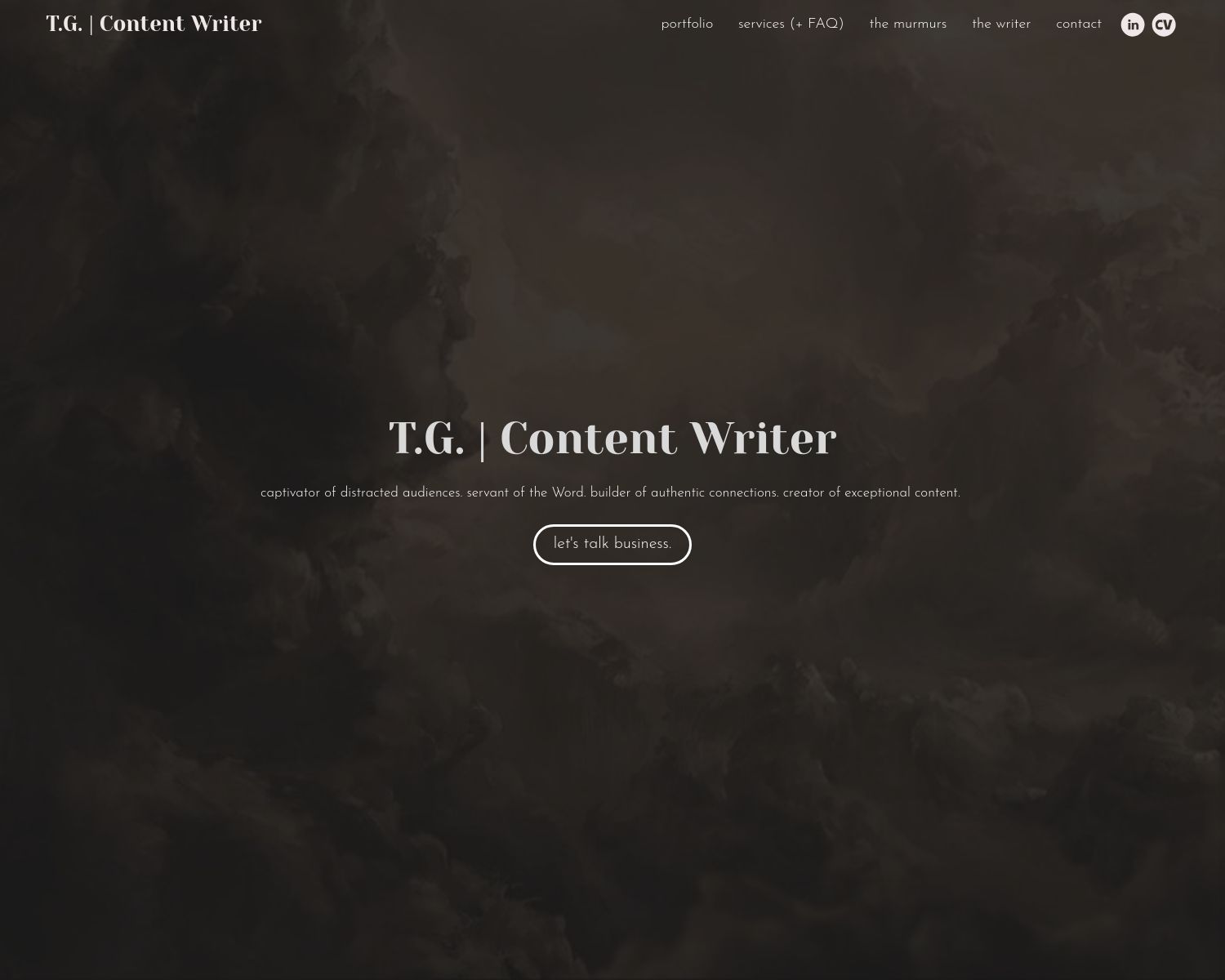
Triana is a content writer and ghostwriter with over 5+ years of experience in a multitude of industries.
Best Features: Triana has used her writing portfolio to not only display her writing samples but to create a clear brand identity. Using an elegant and intriguing black and gray aesthetic, she creates visual interest across pages. She also has a recognizable brand voice that she uses throughout her text.
Pro Tip: If you have wide ranging experience or an extensive professional background, try linking your CV with all the details rather than attempting to stuff all that information onto your About page. This keeps your portfolio clean while still giving clients access to your full credentials.
4. Rochelle Messner
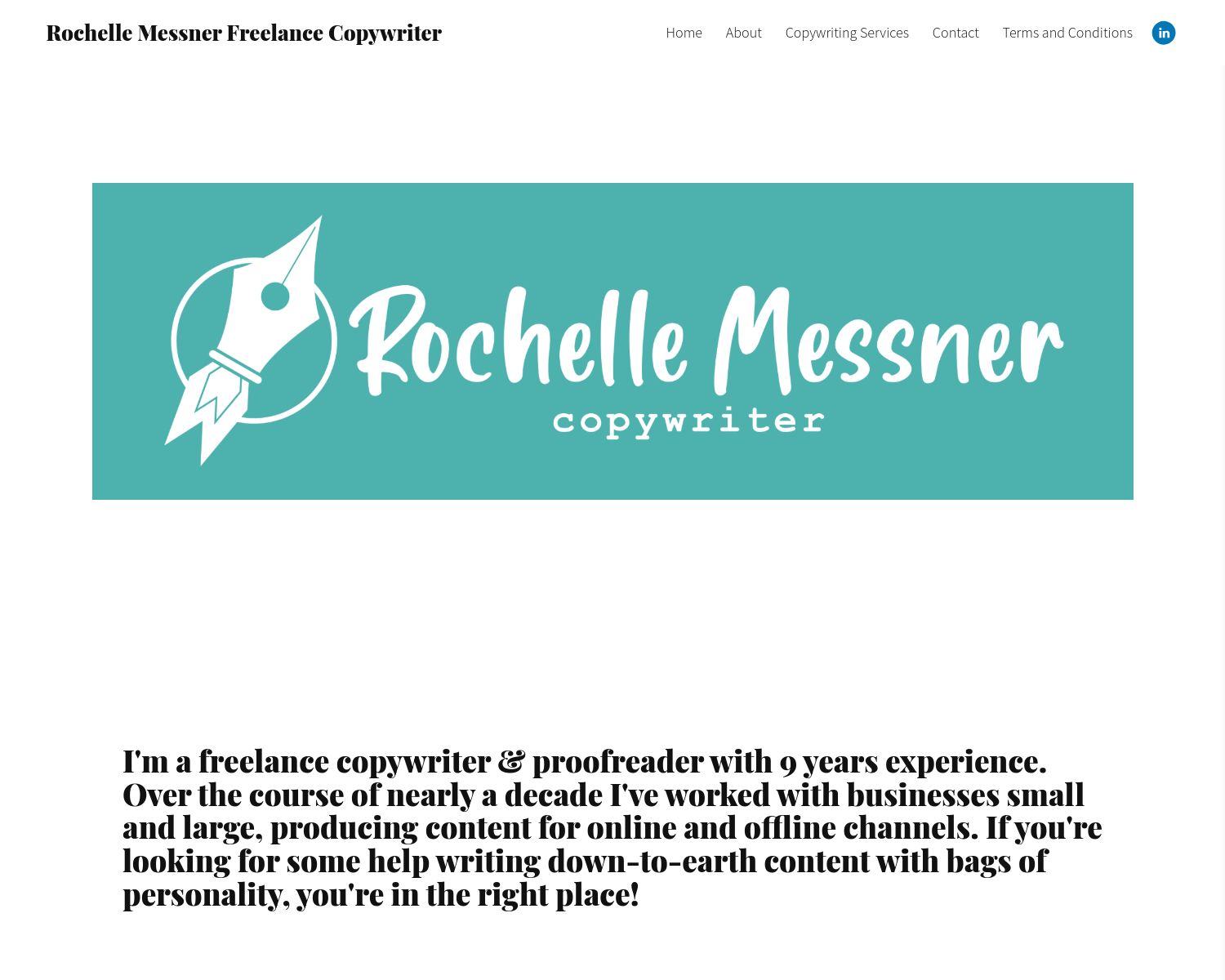
Rochelle Messner is a copywriter with over a decade of experience with both in-house and freelance copywriting.
Best Features: Because Rochelle has worked across multiple industries, she focuses on the types of copywriting that she does with a list of her services on her home page. She's also created separate writing sample portfolio pages that are likewise divided by project type (blog writing, website copywriting, etc). These are nested under Copywriting Services in her Nav menu which keeps it clean and easy to find.
Pro Tip: Rochelle's home page features a great graphic logo that immediately gets your attention and defines her brand. Even though a writing portfolio is about writing, it's important to create visual interest for visitors to your writing portfolio website.
5. Rachel Oliver
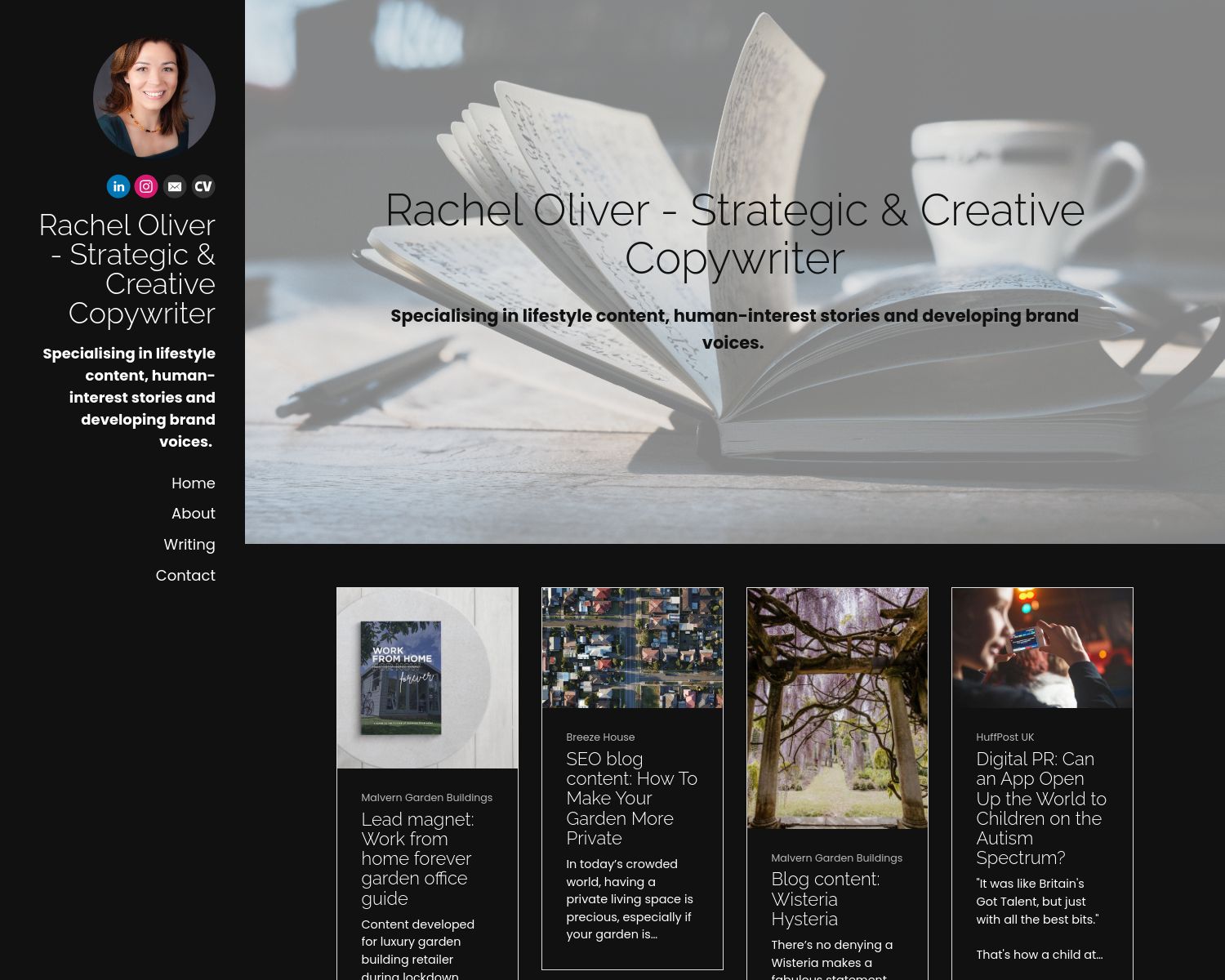
Rachel is a brand strategist and creative copywriter who has worked with national broadcasters and charities.
Best Features: Rachel has made her writing portfolio super accessible by including an FAQ, defining in detail her writing process, and including a "Why work with me?" section that talks about her work philosophy. This makes her portfolio seem conversational, and with the inclusion of buttons that lead to her contact page, she is just an email away.
Pro Tip: Rachel offers a free 30-minute consultation, which she makes easy to book by including a button that leads to her contact page. Making it easy to connect with you makes it much more likely that a potential client will reach out.
6. Alanna Reid
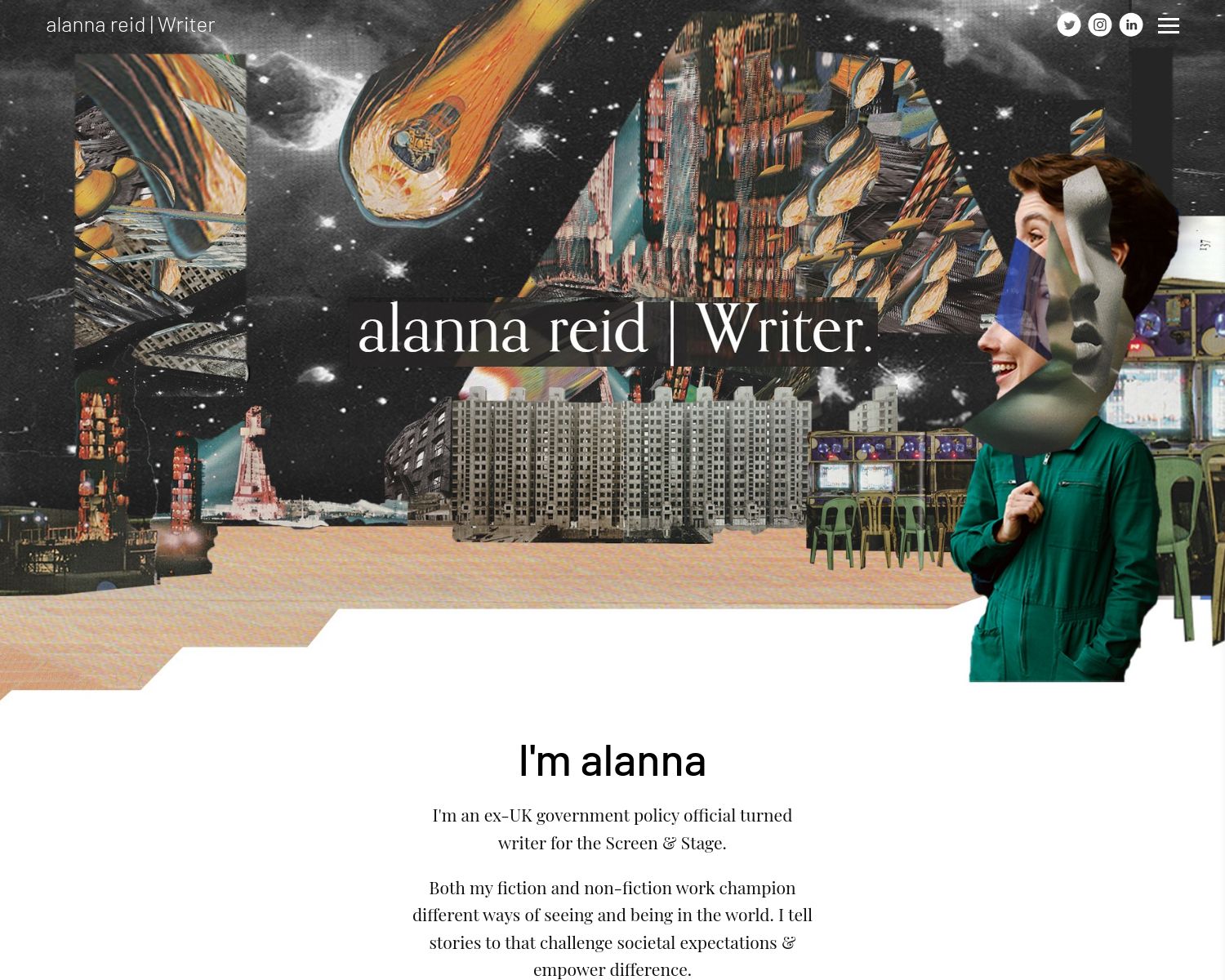
Alanna Reid is a creative writer and screenwriter in the UK.
Best Features: Because Alanna's creative writing portfolio focuses on their creative fiction, nonfiction, and screenwriting, they've designed a portfolio that's equally unique and imaginative by featuring a collage art header and footer. They keep the rest of the design simple, so the art can speak for itself, which also keeps the website easy to read.
Pro Tip: Alanna includes an impressive award they received on their homepage, so it's one of the first things a visitor sees. Showcasing your accolades and awards on your landing page is a great way to immediately establish validity for your work.
7. Amy Rutter
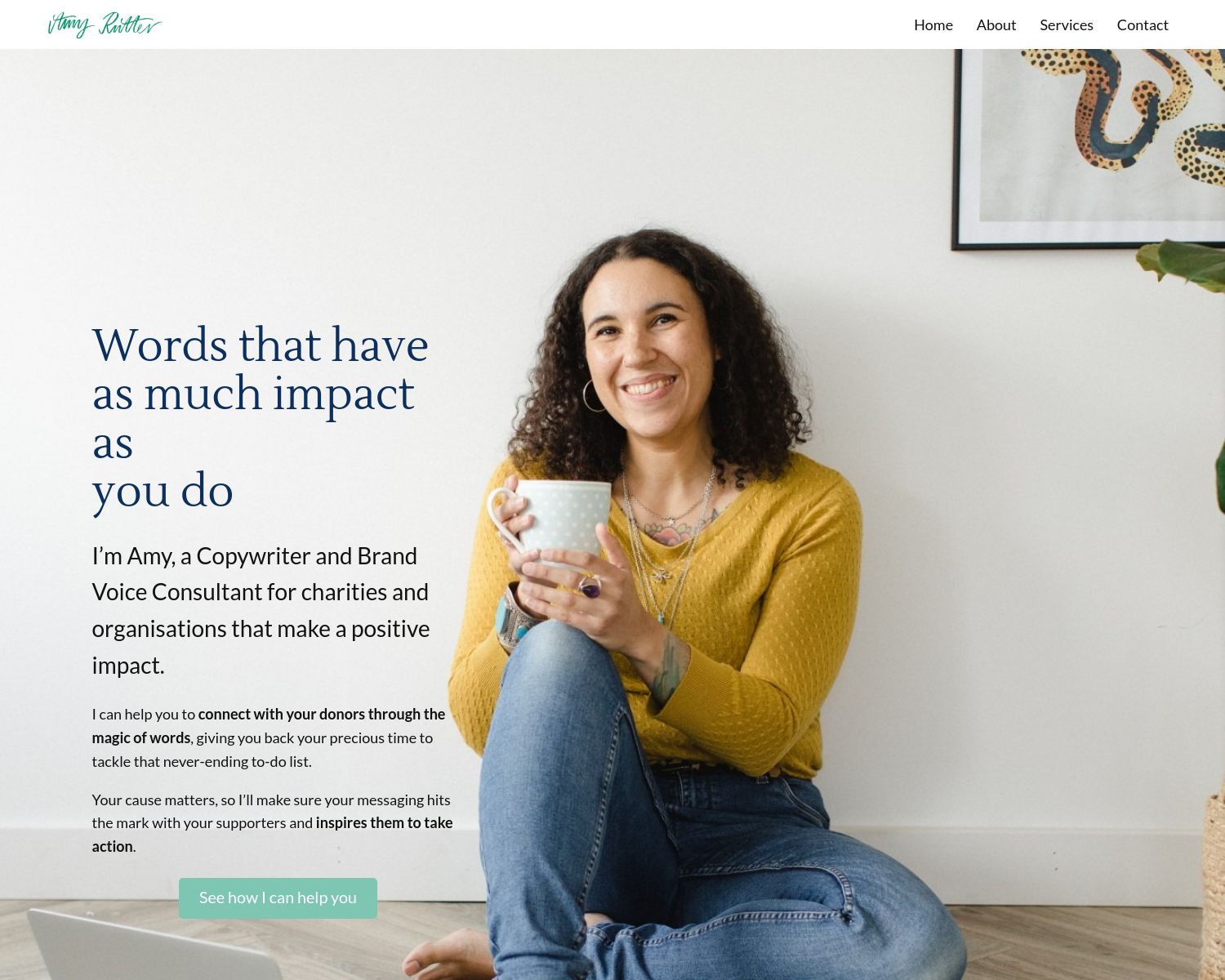
Amy is a copywriter and copy editor with a post-graduate diploma in magazine journalism.
Best Features: Amy takes full advantage of her About Me page by building it out into sections. She covers her educational background, why she started writing, and her writing experience. She even includes a "Three fun facts" section, which gives potential clients a little more info about her personality. She sticks to her own well-developed brand voice, which is a great way to show clients that you understand brand messaging while letting them get to know more about your style.
Pro Tip: Amy includes brand photos as part of her online writing portfolio. It may cost a bit to work with a photographer, but it helps evoke an immediate sense of professionalism.
8. Amanda Monterroso
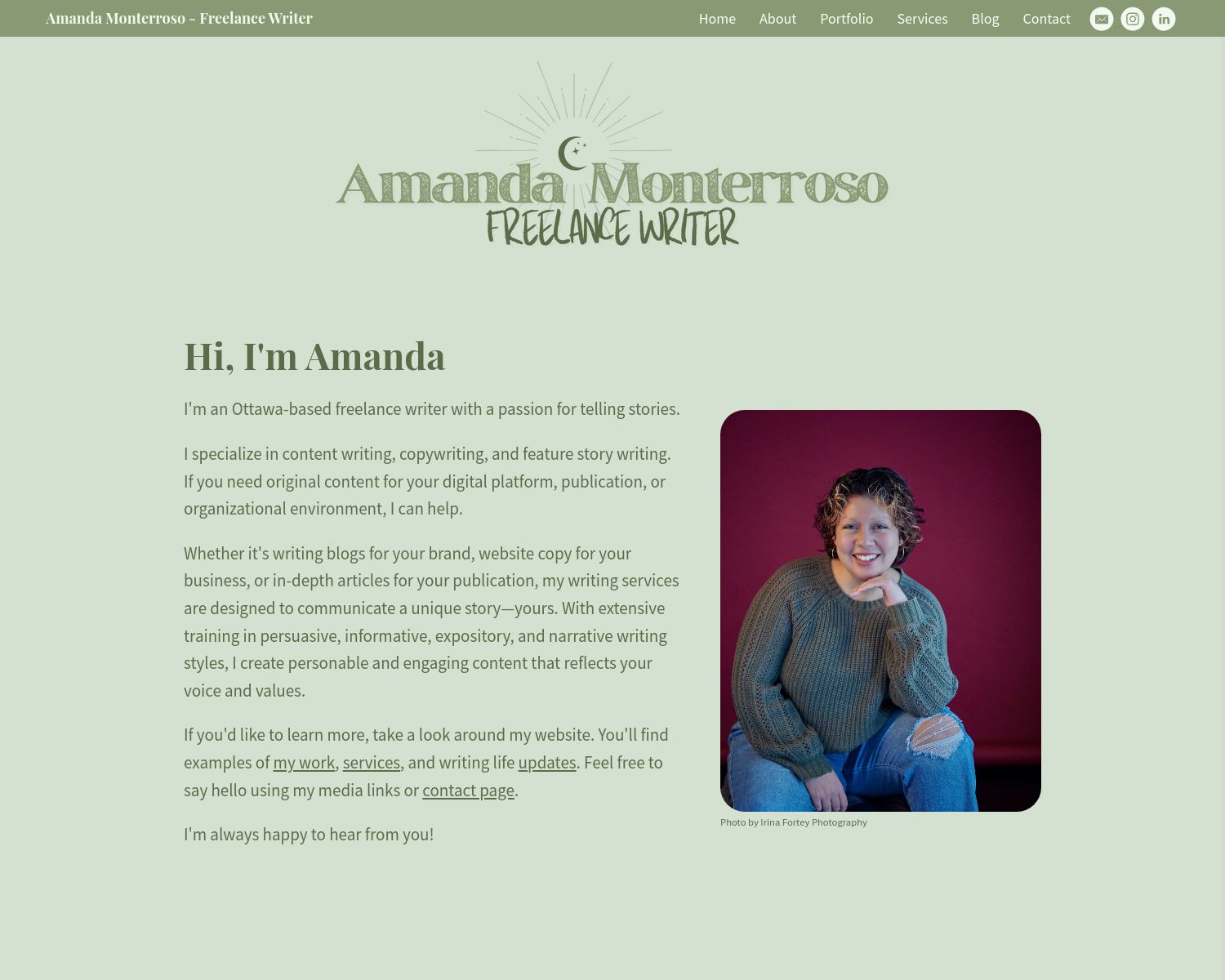
Amanda Monterroso is a freelance content writer and copy editor with a background in creative writing.
Best Features: Amanda includes a Services page where she outlines the writing services she provides. She includes a brief intro with each service that provides information on her approach as well as a list of the types of projects she works on (white papers, social media copy, etc). This makes it easy for a potential client to understand what Amanda has to offer and how she approaches her work.
Pro Tip: In case there isn't an example of the type of project a client may be looking for on Amanda's Portfolio page, she includes her contact information at the top if someone would like to request a specific sample. This is a great way to make sure you're not ruling anyone out if you don't want to include every project you've worked on.
9. Mike Anderson
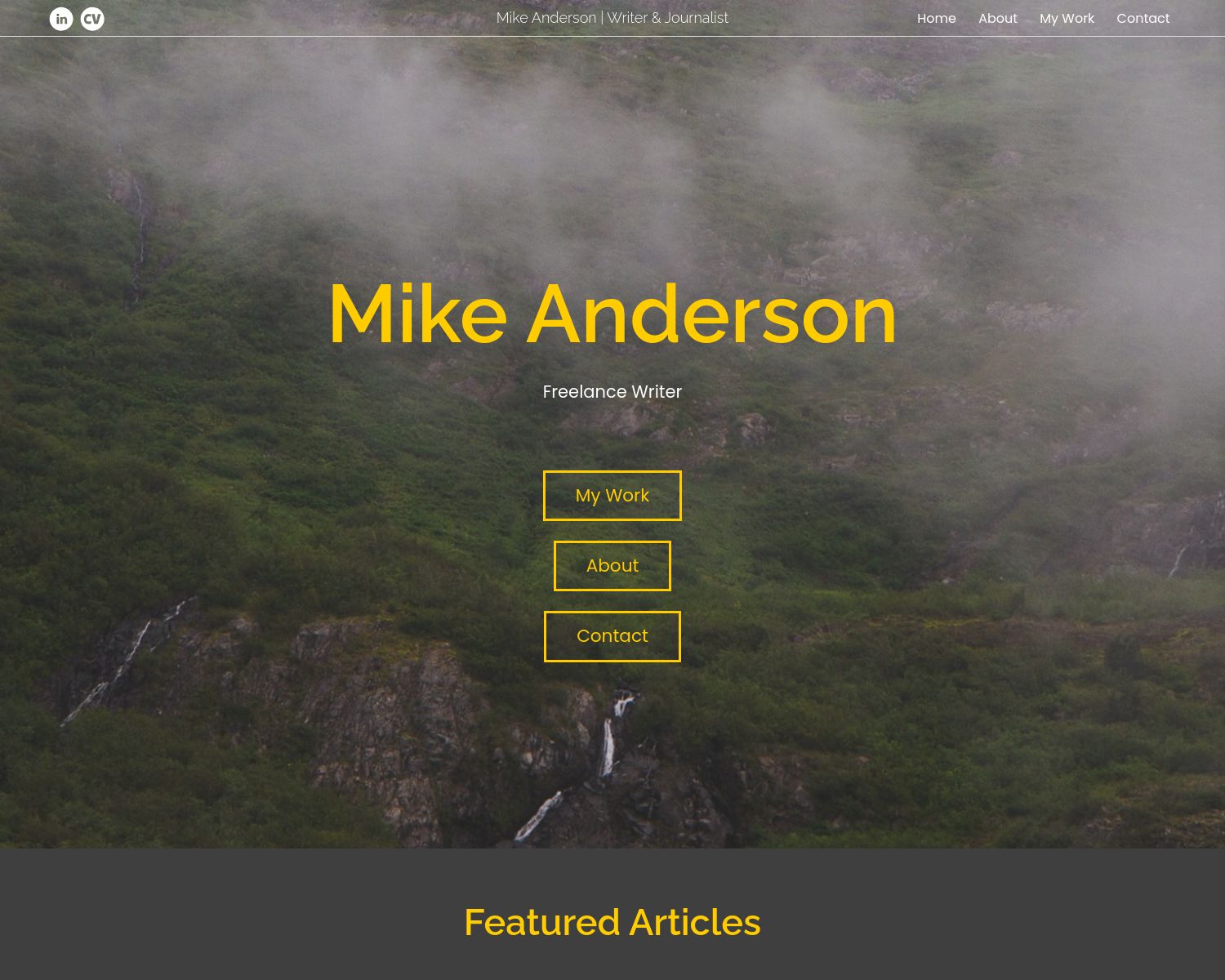
Mike Anderson is a content marketer, freelance writer, and award-winning journalist based in Iowa.
Best Features: Mike’s created a visually impactful online writing portfolio by using photography and design elements to create interest. He uses large photographic headers on each of his pages that are connected by theme and aesthetic. He also makes use of a carousel scroll section for featured articles on his Home page.
Pro Tip: Mike includes many work samples and articles on his Portfolio page. While this might be difficult if you are just starting out, as you build your experience, you can use your portfolio to organize all of your work and create pdf backups for the future.
10. Ashley Carter Cash
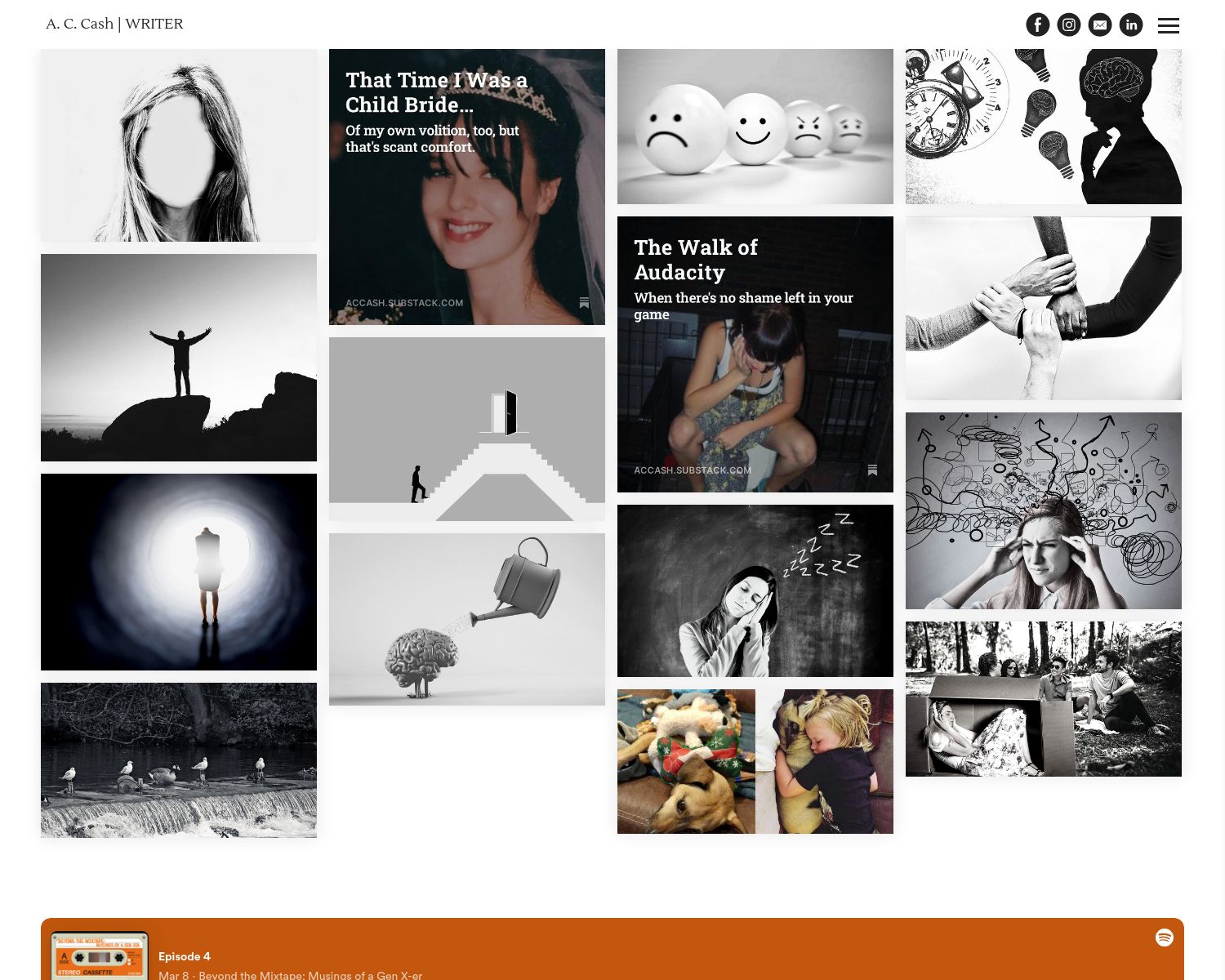
Ashley is a narrative nonfiction writer who also writes advertising copy for clients in the spirituality, lifestyle, and addiction recovery spaces.
Best Features: Ashley's Home page is stunning with a crisp white background showcasing photo buttons in an asymmetrical grid design. Each photo links to an article, and hovering over a photo reveals a text description of the accompanying story. She also includes an embedded podcast interview with her, which creates a dynamic multimedia presence on her website.
Pro Tip: Ashley makes good use of an email sign-up option by enticing visitors to sign up for her VIP List for exclusive perks. This is a more compelling way to attract subscribers because it implies a return for their sign-up.
Ready to build your online writing portfolio website?
Now that you know how to build a writing portfolio and you've seen some great writing portfolio examples, it's time to design your own. Journo Portfolio is the online writing portfolio website builder that has all the features you need for your site, like automatic article backups and pre-designed templates that have writers in mind. Get started today!



